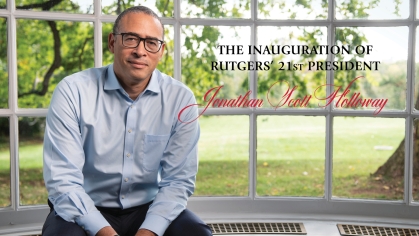35th Annual Marion Thompson Wright Lecture Series
CURATING BLACK AMERICA: LIVING HISTORY FOR ALL
Opening Remarks by Chancellor Nancy Cantor
As we all gather and recognize this thirty-fifth Marion Thompson Wright Lecture, we take a long deep breath for it is a moment of memory, a memorial – for Clem, and for what it has meant to have this remarkable series. A series of lived and living history that will live on, as will dear Clem, and his legacy, for lives like his, and like that of Marion Thompson Wright, and like those that are curated by and in this series, and in the museums and parks and historic sites preserved and presented and created by those who will speak here today, do not pass on – they inspire always, for all time. Clem and Marion Thompson Wright were both historians who demonstrated day in and day out that real lives matter, Black Lives Matter, in history and in real life, and they worked at that very intersection between history and real life, reminding us neither to romanticize the past nor to forget its stamp on the present and what it can tell us about pushing on. And in my mind, that is what Curating Black America is all about – not to glorify, but not to forget, and to keep attempting to realize more possibilities – there were many victories that Marion Thompson Wright didn’t get to see for herself in the civil rights struggles of her time, and yet her handwriting was on them for all to see; Clem isn’t here for this 35th, yet his mark is all over it.
Thus, in a year when we so feel the hole left in our souls by Clem’s passing, it is so right that this year’s theme is Curating Black America – for curating is at once about the past and always about now and the future; it fills our souls with images and icons, stories and voices, that once lived or live now, for real or in imaginative reality, and then always live on by the very act of curation. It is a tribute, a reflection, a celebration, a questioning, a critique, a call to action, and most of all, a hopeful act itself.
Curation when done well – as all our remarkable speakers today so exemplify – is perplexing because its impact depends so pointedly on being at once invitingly inclusive and bravely selective – and nothing is more deserving of that perfect intertwining than the black experience – the history, the art, the lives – that define an exceptional struggle that itself defines all of America’s – or as Lonnie Bunch said about his grand project -- “The notion that is so important here is that African- American culture is used as a lens to understand what it means to be an American.” (NY Times, January 22, 2011). How prophetically necessary is that as a reminder to us all in a time when it seems that images so often are designed to distance and protect “white” America (whoever that really is) from “Black” America (reified and simplified to signal the “other”).
While I certainly didn’t know Marion Thompson Wright, I suspect that like Clem, a fitting descriptor of what she and he both stood for is vigilant hope, and that Curating Black America represents that same spirit of agency. Certainly not sentimental or simple hope – rather vigilant hope precisely informed by how long it takes and how hard it is to realize the apparently simple, but not so immediately gained, basic rights of being seen – seen as fully valuable, fully real, fully human – seen as just as fully human as the onlooker. When we collectively curate Black America – joining as those appreciative onlookers with those here today -- Lonnie Bunch, Robert Stanton, Thelma Golden, George McDaniel, Catherine Braxton, Rebecca Campbell, and of course, Clement A. Price and Marion Thompson Wright, whose care and courage realize its inspiring potential, we ask only, but not simply, that it be seen in full view, and understood with full humanity.
Today, even as we celebrate with such exhilarating expectation the opening of the National Museum of African American History and Culture – and Lonnie knows well how Clement Alexander Price will be looking down on its glorious achievement with equal parts of love and critique – we are reminded of what Clem knew so well – everyday life in everyday communities curates, for better or worse, in justice and in injustice, the lives of Black America. As the pictures of Selma and Montgomery curate one period, the pictures of Ferguson and Staten Island curate another; we have marched, and there is much more marching left to do for democracy to reign true to its principles.


